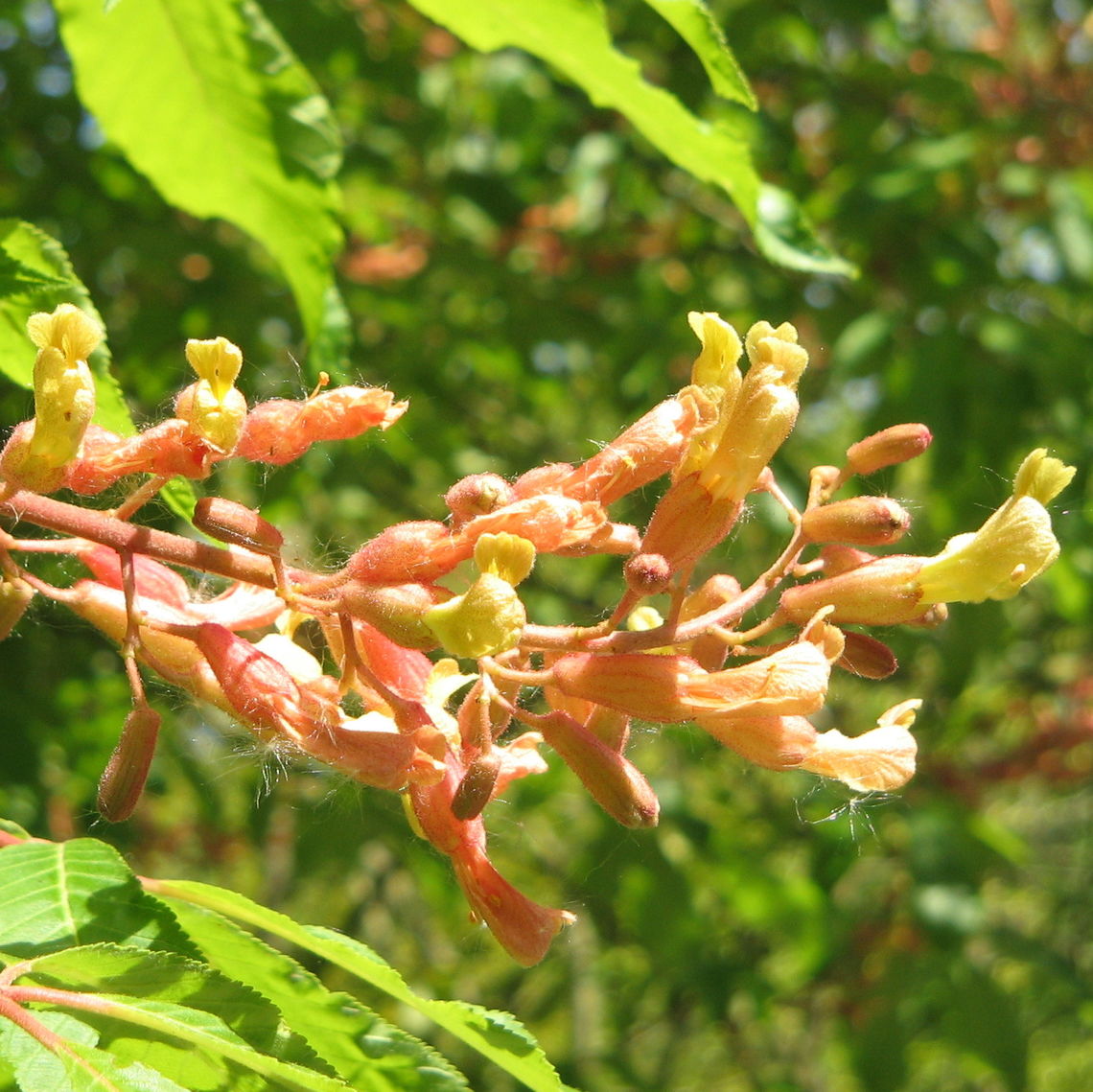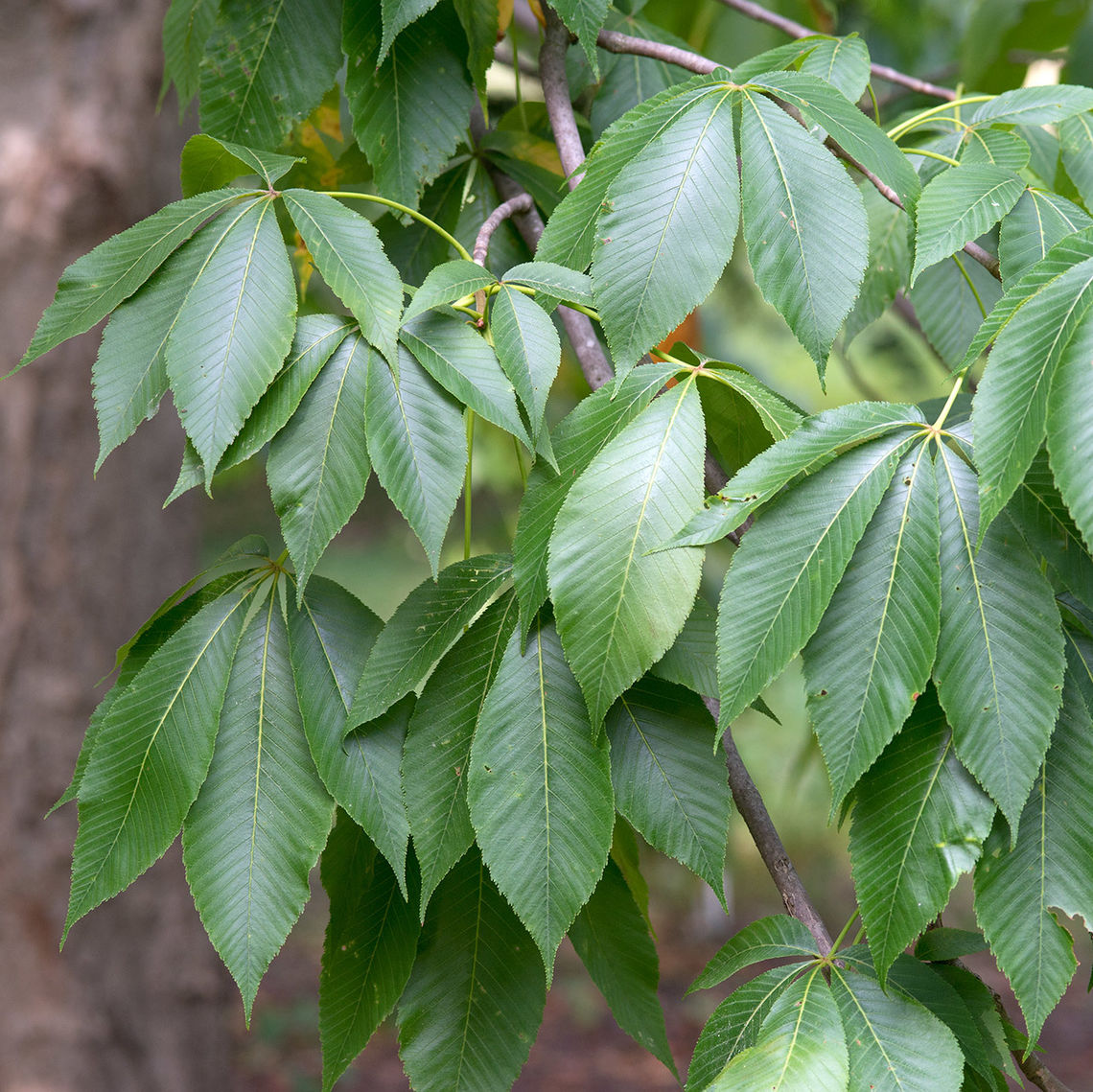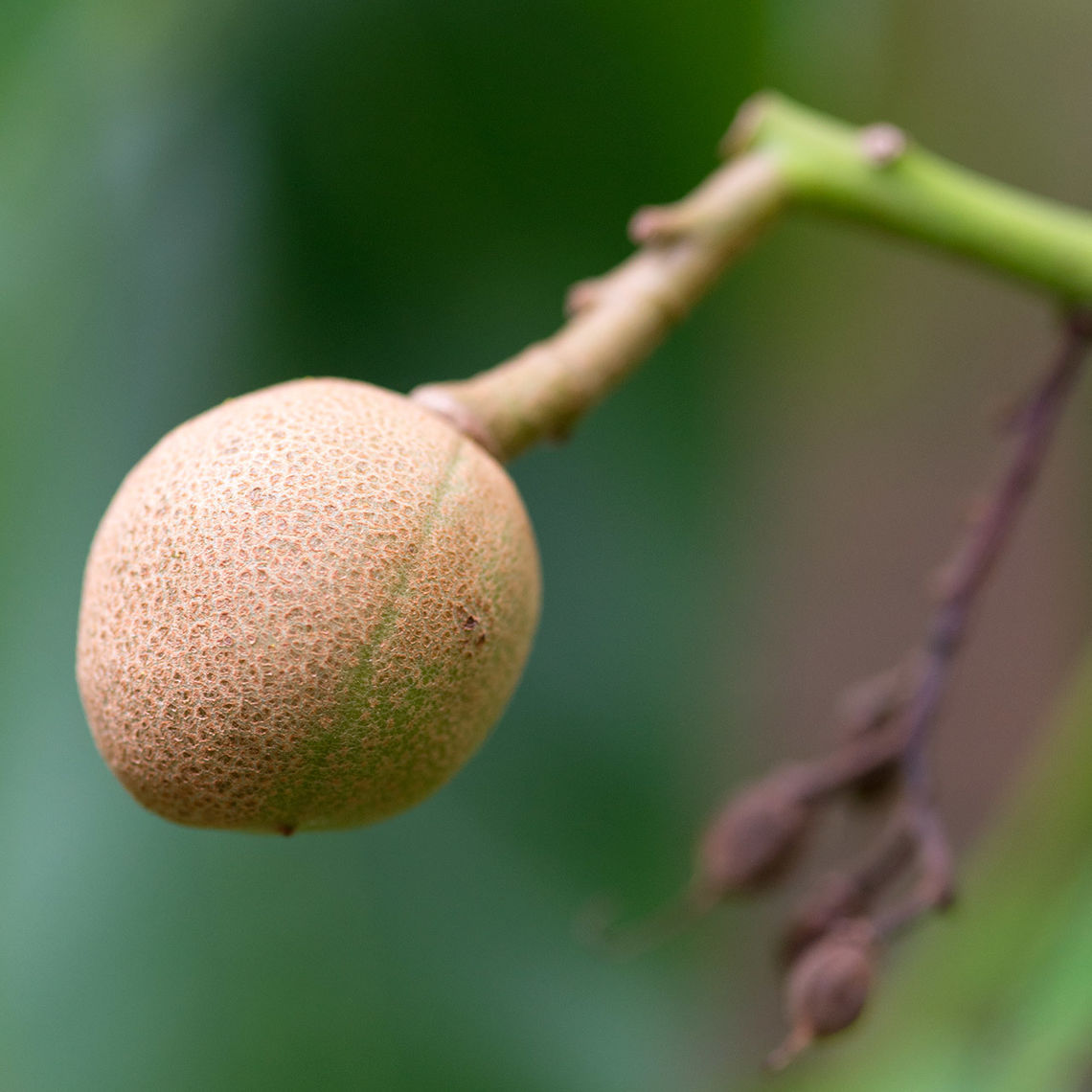Yellow Buckeye (Aesculus flava)
Growing up to 75 feet high, the yellow buckeye is the largest buckeye native to the U.S. This tree is also commonly called big buckeye or sweet buckeye, and is synonymous with Aesculus octandra. The tree's leaves are composed on 5 long, pointed, toothed, and dark green leaflets, which turn yellow to a pumpkin-orange in the fall. This buckeye also produces yellow flowers that appear in May. Even though the round brown buckeye fruits that this tree produces are poisonous to humans if eaten, they have been collected by children and adults as good luck charms for years.
Family: Sapindaceae (Soapberry)
Characteristics: The dark green leaves are composed of five 4-inch to 6-inch-long pointed and toothed leaflets, which radiate from a single point at the end of the stem (palmate compound). In the fall, leaves turn yellow to a pumpkin-orange. In May, green-yellow flowers begin to bloom, however are often masked by the foliage. These flowers are followed by buckeye fruits, which are encased in a leathery, light brown, and smooth outer shell. Bark is gray-brown, has large, flat, smooth plates, and becomes scaly with age. This tree has an upright-oval shape and the upper branches are slightly spreading. It grows 50-75 feet high and 30-50 feet wide.
Foliage: Deciduous (leaves lost seasonally)
Geographic Origin: Eastern North America (native)
Cultivation Notes: Requires medium maintenance. Does best in full sun to part-shade. Prefers medium moist, acidic, and well-drained soils. This species is moderately tolerant to drought conditions. Buckeye trees may be difficult to transplant, due to their deep taproot.
Number on Campus: 2
Sources: Dirr, Morton Arboretum, Missouri Botanical Garden



